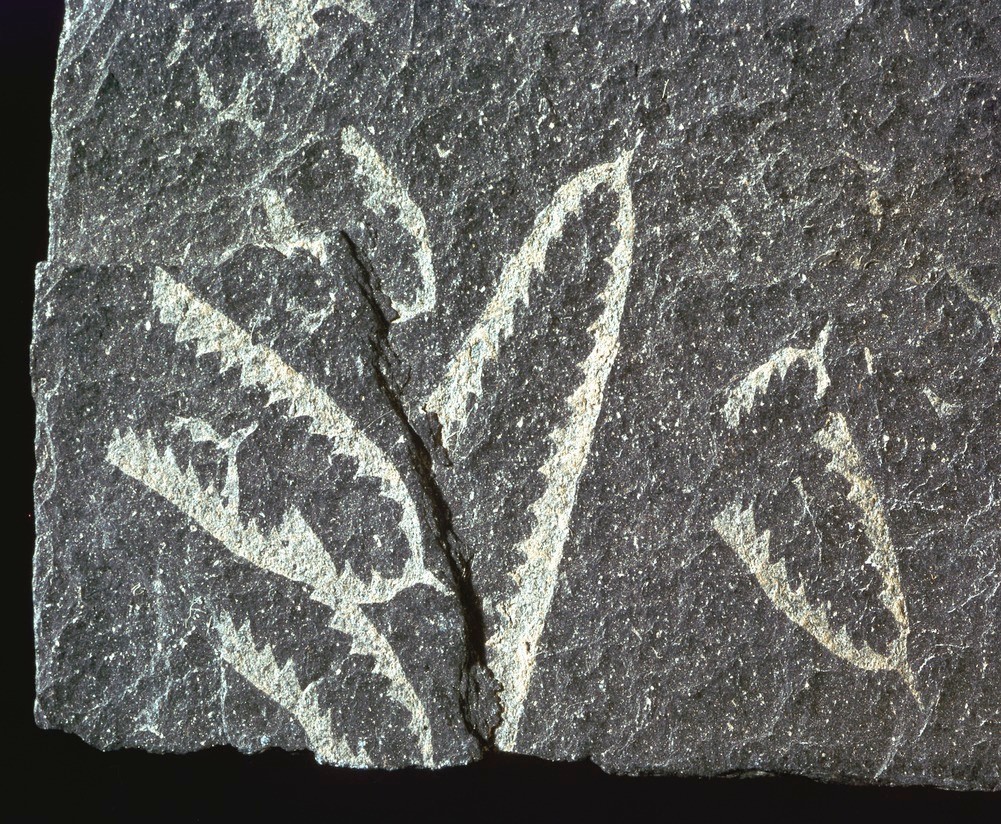| P number: | P549553 |
|---|---|
| Caption: | Didymograptus murchisoni, a graptolite. |
| Description: | Didymograptus, because of its general shape have been called 'tuning fork' graptolites, although there has been considerable debate about whether the animal lived with its branches (stipes) hanging downwards or whether it was a V-shape. These graptolites, which were alive during early and mid Ordovician times (about 460-495 million years ago), were planktonic. The illustrated species, Didymograptus murchisoni, inhabited the Llanvirn sea of Wales (about 460-470 million years ago). The whole organism (rhadosome) is composed of two branches (stipes). The thecae (the tube in which the zooids lived - the apparent 'saw teeth' in the illustration) are connected via a tube that runs along the stipe, for these are colonial animals. Graptolites are thin, often shiny, markings on rock surfaces that look like pencil marks (their name comes from the Greek meaning 'writing in the rocks'). They are the remains of intricate colonies, some of which accommodated up to 5,000 individual animals. The zooids lived in tube-like structures called thecae comprised of collagen. Whereas the cone-like dendroid graptolites were benthonic, graptoloids were planktonic. They first evolved in the Cambrian (about 520 million years ago) and they became extinct in the Carboniferous (about 350 million years ago). |
| Photographer: | Unknown |
| Copyright statement: | Unknown |
| Orientation: | Landscape |
| Size: | 689.27 KB; 1001 x 824 pixels; 85 x 70 mm (print at 300 DPI); 265 x 218 mm (screen at 96 DPI); |
| Average Rating: | Not yet rated |
| Categories: | Best of BGS Images/ Fossils |
Reviews
There is currently no feedback

